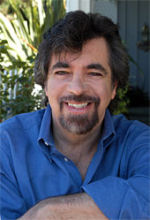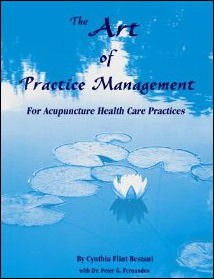Acupuncture & TCM Articles

Neil R. Gumenick is the founder and Director of The Institute of Classical Five-Element Acupuncture. Neil is a Worsley certified advanced teacher of Classical Five-Element Acupuncture and a practitioner with over 27 years of private practice experience. Neil holds three degrees from the College of Traditional Acupuncture (U.K.), and he participated for 10 years in the Master Apprentice Programô, led by Profs. J.R. & J.B. Worsley. Neil has taught at the USC and UCLA Schools of Medicine, the Worsley Institute of Classical Acupuncture, the Traditional Acupuncture Foundation, California Acupuncture College, Santa Barbara College of Oriental Medicine, and Pacific College of Oriental Medicine. He has been a Professor at Emperor's College of Traditional Oriental Medicine and SAMRA University of Oriental Medicine. Neil is co-author of The Art of Practice Management for Acupuncture Health Care Practices
Using the Spirits of the Points: The Small Intestine Meridian, Part Two
By Neil Gumenick, MAc (UK), LAc, Dipl. Ac
The Spirits of the Points In this context, let us examine the spirits of points on the Small Intestine meridian and see how they can be used to restore the functioning of this Official when it is the primary imbalance or Causative Factor.
Small Intestine 6: Nourishing the Old
This is one of the best points to nourish body, mind, and spirit. It is particularly useful for older patients as ailments associated with aging and deterioration set in. We may see things such as osteoporosis, dehydration, weakness, fatigue, and memory loss. Contrarily, as we age, we can grow in wisdom; in maturity, we can see our lives from an entirely new, more detached, often humorous perspective. This point can bring forth such gifts, with a tremendous feeling of vitality and relief. The point can also be used to support and nourish a patient of any age with an old problem, perhaps something that the patient has long been unable to sort out and resolve. Such people may be set in their ways, dwelling on the past, feeling unable to cope any longer. They need nourishment and support to get out of the rut and enter the joyous flow of life, which is available at any age.

Small Intestine 9: Upright Shoulder
In considering the meaning of a point that contains the name of a body part, we must ask what that part does. How is a shoulder used? What does it do? A shoulder supports and carries. We carry a lot of responsibilities and burdens on our shoulders. We must be able to sort out what is essential to carry, stay upright, and not collapse under the stress. We must not carry excess, but discard that which is unnecessary. This point enables us to stand "upright" and straight, taking on a worthy and appropriate load, unique to who we truly are and the path that we take in life.
Small Intestine 11: Heavenly Ancestor
This is one of the strongest points on the whole of the body to clean out impurities of the mind and spirit. The ancient Chinese held their elders and ancestors in great reverence. The ancestors had seen it all before, had traveled the path countless times and held the wisdom gleaned from vast experience. They learned what was useful and what was useless. Within all of us is access to such wisdom, which we can call upon for guidance. When it seems to be out of our grasp, this point can provide the connection, revitalizing clarity where there was filth, confusion and chaos.
Small Intestine 12: Grasping the Wind
This is a wonderful point for a patient who doesn't know which way to turn - is "grasping at straws," trying this, trying that, mind racing, stuck, confused, unable to sort out and see what is essential. Just as the wind cleanses by blowing away debris, so this point brings fresh air to this Official, breaks through the fog and muddle, allowing the patient to get a firm grasp on things, to see from a good, wholesome, and stable place.
Small Intestine 17: Heavenly Appearance
Background on "Windows of the Sky": This is one of two points on this meridian that belong to a special category of points called "Windows of the Sky." Many sick people lose their ability to see. They may possess physical sight, but cannot clearly see with their mental or spiritual eyes what is going on within them or in the outside world. It is as if they are imprisoned by their sickness in a dark and dreary place, excommunicated from the flow of life.
Treating a Window of the Sky is akin to breaking a hole in this prison. It lets in a rush of fresh air and light. Once the patient can see the sky, the outside world, it may be the impetus to break down the walls and barriers to freedom. We use these extremely powerful points only when the patient is prepared and when the Officials express the need. Opening a Window too soon is like suddenly releasing a prisoner into the bright sun and saying, "You're free. Deal with it." The shock could be overwhelming.
Preparing the patient primarily involves the use of command points (on the Causative Factor meridians) over a number of treatment sessions. The amount of treatment needed to prepare a patient for a Window or, indeed, to determine if such points are needed, will vary tremendously from person to person, as each is a unique individual. Using command points (e.g., source points, tonification and sedation points, junction/connecting points, horary points, element points, energy transfers) influences every point on the body, including opening and closing every Window. However, if a Window is stuck and unable to open and close appropriately, the patient, although improved, will still be unable to clearly "see."
The Window, Heavenly Appearance, when opened, lets in the heavenly light so that we can see and extract the pure goodness from the impure. Everything is a creation of Heaven and there is good in everything. When we can see this, truly, everything has a heavenly appearance. When only the pure is retained, the fire of love permeates everywhere. We see the Divine Spark in ourselves and in everything, untainted by corruption or evil. We can actually live with the consciousness that in everything and everyone, there is a treasure: an experience to enjoy or a lesson to learn.

Small Intestine Meridian (SI)
The Hand Greater Yang (Tai Yang) of the Small Intestine 19 points
The small intestine channel of the Hand-Taiyang starts at the ulnar aspect of the tip of the little finger, and travels along the ulnar border of the hand dorsum upward to the posterior border of the lateral aspect of the upper arm . It passes through the cubital region curving around the scapular region. Then turning downward to the supraclavicular fossa and ascends to the neck. Travels up to the cheek going through the outer canthus of the eye, and ends anterior to the tragus of the ear.
View Small Intestine Point Locations.
 
The Art of Practice Management for Acupuncture Health Care Practices
What you will find in this book is a specific, comprehensive approach that gets to the root cause of success in practice.
This new book presents acupuncture practice as art from the standpoint of centering, qi, and wholeness. It builds on the premise that practices succeed from bridging inner and outer aspects of the self. It is an inquiry into the self and addresses clear understandings and approaches to reputable patient care and practice qi. It brings in the five elements and work with the seasons of practice from training and start-up to growth, stability, expansion and transformation. The authors artfully bridges the essence of both patient and practitioner well-being without excluding the practicalities of financial well-being. This book very specifically and extensively shows how the different parts of practice nourish and feed one another and are interdependent on one another for the qi to flow synchronistically.
It explores the dual nature of procedures that work and those which do not in acupuncture health care practice, returning again and again to the delicate balance of practicality and spirituality.
|
